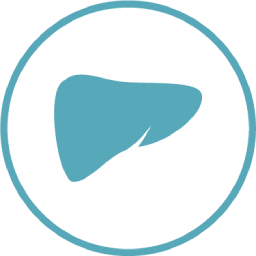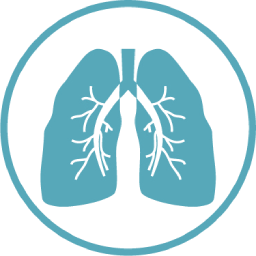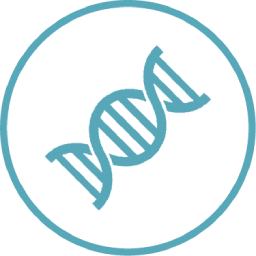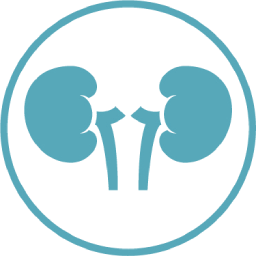Association of miRNAs with
Cardiovacsular Disease
what is
Cardiovacsular Disease?
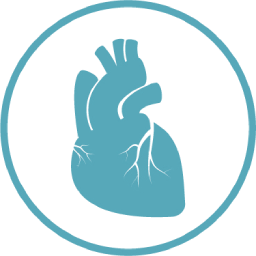
…
Association of miRNAs with Cardiovacsular Disease
Project.1 We systematically investigated the association of genetic variants in the seed region of miRNAs with 17 cardio-metabolic traits/diseases using the largest genome-wide association studies. A variant of miR-4513 was associated with fasting glucose, low-density lipoprotein-cholesterol, total cholesterol, systolic and diastolic blood pressure, and risk of coronary artery disease. We experimentally showed that miR-4513 expression is significantly reduced in the presence of the mutant allele. We sought to identify miR-4513 target genes that may mediate these associations and revealed five genes (PCSK1, BNC2, MTMR3, ANK3, and GOSR2) through which these effects might be taking place.
A genetic variant in the seed region of miR-4513 shows pleiotropic effects on lipid and glucose homeostasis, blood pressure, and coronary artery disease. Ghanbari M, et al. Human Mutation. 2014 Dec;35(12):1524-31. doi: 10.1002/humu.22706.
Project.2 Using the largest genome-wide association studies available on glycemic indices, lipid traits, anthropometric measures, blood pressure, coronary artery diseases, and type 2 diabetes mellitus, we identified 11,067 cardiometabolic-associated variants, 230 of these variants were located within miRNA-binding sites in 3’-UTR of 155 cardiometabolic genes. Thirty-seven of the 230 variants were found to fulfill our predefined criteria for being functional in their genomic loci. Ten variants were subsequently selected for experimental validation studies. We showed evidence for polymorphisms in miRNA-binding sites that can both positively and negatively affect miRNA-mediated regulation of cardio-metabolic genes.
Genetic Variations in MicroRNA-Binding Sites Affect MicroRNA-Mediated Regulation of Several Genes Associated With Cardio-metabolic Phenotypes. Ghanbari M, et al. Circ Cardiovasc Genet. 2015 Jun;8(3):473-86. doi: 10.1161/ CIRCGENETICS.114.000968.
Project.3 We conducted a multi-omics analysis to identify miRNAs associated with cardio-metabolic risk factors and diseases. Using publicly available GWAS summary statistics, we found genetic variants in miRNA-related sequences associated with cardio-metabolic traits, including lipid and obesity-related traits, glycemic indices, blood pressure, and disease prevalence of T2D and CHD. Then, we used DNA methylation and miRNA expression data from the Rotterdam Study to further investigate the link between associated miRNAs and cardio-metabolic traits. We found 180 SNPs annotated to 67 miRNAs to be associated with the studied traits. Alterations in DNA methylation levels of CpG sites annotated to 38 of these miRNAs were associated with the same trait(s). Moreover, plasma expression of 8 of the 67 identified miRNAs were also associated with the same trait. Integrating the results of different omics data showed miR-10b-5p, miR-148a-3p, miR-125b-5p, and miR-100-5p to be strongly linked to lipid traits.
Multi-Omics Analysis Reveals MicroRNAs Associated With Cardiometabolic Traits. Mens MMJ, …, Ghanbari M. Front Genet. 2020 Feb 27;11:110. doi: 10.3389/fgene.2020.00110. eCollection 2020.
Project.4 Plasma levels of miRNAs were measured in 1999 participants from the population-based Rotterdam Study. Logistic regression and Cox proportional hazards models were used to assess the associations of plasma well-expressed miRNAs with the prevalence and incidence of atrial fibrillation (AF). In total, 196 participants developed AF during a median follow-up of 9.0 years. After adjusting for multiple testing, miR-4798-3p was significantly associated with the odds of prevalent AF among men. This miRNA could potentially regulate the expression of a number of AF-related genes involved in calcium and potassium handling in myocytes, protection of cells against oxidative stress, and cardiac fibrosis.
Circulatory MicroRNAs in Plasma and Atrial Fibrillation in the General Population: The Rotterdam Study. Geurts S, …, Ghanbari M, Kavousi M. Genes (Basel). 2021 Dec 22;13(1):11. doi: 10.3390/genes13010011.
Project.5 We leveraged data from the largets GWAS on lipid and obesity-related traits, blood pressure, type 2 diabetes, and coronary artery disease and identified 179 cardiometabolic associated SNPs in 102 lncRNAs. Of these, 55 SNPs, either the lead SNP or in strong LD with the lead SNP in the related loci, were selected for further investigations. Our in silico predictions and functional annotations of the SNPs as well as expression and DNA methylation analysis of their lncRNAs demonstrated several lncRNAs that fulfilled predefined criteria for being potential functional targets. In particular, we showed that SNP in the second exon and cg17371580 in the promoter region of LOC157273 are associated with lipids; a lncRNA which is expressed in liver and associates with the expression of its nearby coding gene, PPP1R3B.
A systematic analysis highlights multiple long non-coding RNAs associated with cardiometabolic disorders. Ghanbari M, et al. J Hum Genet. 2018 Apr;63(4):431-446. doi: 10.1038/s10038-017-0403-x.
Project.6 List of 304 cardio-metabolic associated gene were retrieved from the latest GWAS and combined with miRNA target prediction databases (TargetScan, miRTarBase, or miRecords) to identify miRNAs that regulate them. We found a higher proportion of genes reported from all GWAS that were predicted targets for miRNAs in comparison to all protein-coding genes (75.1%), the proportion was even higher for cardiometabolic genes (80.6%). Enrichment analysis showed that cardiometabolic genes were over-represented in target genes for 29 miRNAs (based on TargetScan) and 3 miRNAs (miR-181a, miR-302d and miR-372) (based on miRecords) after correction for multiple testing. Our work provides evidence for non-random assignment of genes to miRNAs and supports the idea that miRNAs regulate sets of genes that are functionally related.
An Enrichment Analysis for Cardiometabolic Traits Suggests Non-Random Assignment of Genes to microRNAs. Mustafa R, Ghanbari M, Evangelou M, Dehghan A. Int J Mol Sci. 2018 Nov 20;19(11):3666. doi:10.3390/ijms1911366. https://www.mdpi.com/1422-0067/19/11/3666
Project.7 This paper reviews current knowledge of the regulatory role of miRNAs in various pathogenic pathways underlying atherosclerosis development and also outline potential clinical applications of miRNAs in atherosclerosis.
Implications of microRNAs in the Pathogenesis of Atherosclerosis and Prospects for Therapy. Gorabi AM, Ghanbari M, Sathyapalan T, Jamialahmadi T, Sahebkar A. Curr Drug Targets. 2021;22(15):1738-1749. doi: 10.2174/1389450122666210120143450
Project.8 Plasma miRNA levels were measured in 4,440 Framingham Heart Study (FHS) participants. Linear regression analyses were conducted to test the cross-sectional associations of each miRNA with eight CVD risk factors. Prospective analyses of the associations of miRNAs with new-onset obesity, hypertension, type 2 diabetes, CVD, and all-cause mortality were conducted using proportional hazards regression. Replication was carried out in ~2000 Rotterdam Study (RS) participants. Pathway enrichment analyses were conducted and target genes were predicted for miRNAs associated with ≥5 risk factors in the FHS. In the FHS, six miRNAs were associated with ≥5 risk factors. This miRNA signature was enriched for pathways associated with CVD and several genes annotated to these pathways were predicted targets of the identified miRNAs. Furthermore, three miRNAs were each associated with ≥2 risk factors in the RS.
Plasma Extracellular MicroRNAs Associated with Cardiovascular Disease Risk Factors in Middle-Aged and Older Adults. Hannah Karlin, Meera Sooda, Martin Larson, Jian Rong, Tianxiao Huan, Michelle Mens, Frank van Rooij, M. Arfan Ikram, Paul Courchesne, Jane E. Freedman, Roby Joehanes, Gregory Mueller, Maryam Kavousi, Mohsen Ghanbari*, Daniel Levy*. (*Shared last-author). Accepted by Journal of the American Heart Association, April 2024.
Project.1 We conducted a genome-wide profile of circulating miRNAs in plasma in 1208 Rotterdam Study participants. Obesity and body fat distribution were measured as body mass index (BMI), waist-to-hip ratio (WHR), android-fat to gynoid-fat ratio (AGR), and fat mass index (FMI) measured by anthropometrics and Dual X-ray Absorptiometry. Multivariable linear regression models were used to assess the association of miRNAs well-expressed in plasma with these traits adjusted for potential covariates. Plasma levels of 65 miRNAs were associated with BMI, 40 miRNAs with WHR, 65 miRNAs with FMI, and 15 miRNAs with AGR. Of these, 12 miRNAs were significantly associated with all traits, while four miRNAs were associated only with WHR, three miRNAs only with FMI, and miR-378i was associated only with AGR. The most significant association among the overlapping miRNAs was with miR-193a-5p, which was shown to be associated with type 2 diabetes and hepatic steatosis in the Rotterdam Study. Five of the obesity-associated miRNAs and two of the body fat distribution miRNAs have been correlated previously to cardiovascular disease.
Plasma circulating microRNAs associated with obesity, body fat distribution, and fat mass: the Rotterdam Study.
Abozaid YJ, …, Ghanbari M. Int J Obes (Lond). 2022 Dec;46(12):2137-2144. doi: 10.1038/s41366-022-01227-8.
Project.2 We retrieved 2320 variants in miRNA-encoding sequences and tested their associations with 17 cardio-metabolic traits/diseases using genome-wide association studies (GWAS) on glycemic indices, anthropometric measures, lipid traits, blood pressure, coronary artery disease, and type 2 diabetes. A variant in miR-196a2 was associated with waist-to-hip-ratio. Two of its target genes, SFMBT1 and HOXC8, were identified which may mediate this association, and their regulation by miR-196a2 were confirmed experimentally. Moreover, a variant in miR-1908 was found to be associated with serum lipids and fasting glucose.
The association of common polymorphisms in miR-196a2 with waist to hip ratio and miR-1908 with serum lipid and glucose. Ghanbari M, et al. Obesity (Silver Spring). 2015 Feb;23(2):495-503. doi: 10.1002/oby.20975.
Projec.1 Profiling of plasma miRNAs was conducted in 1933 participants of the Rotterdam Study. Linear regression was implemented to explore the link between alcohol consumption (glasses/d) and miRNA concentrations. Sensitivity analysis for alcohol categories (nondrinkers, light drinkers, and heavy drinkers) was performed. We utilized the alcohol-associated miRNAs to explore their potential mediatory role between alcohol consumption and liver-related traits. Plasma concentrations of miR-193b-3p, miR-122-5p, miR-3937, and miR-4507 were significantly associated with alcohol consumption. A potential mediatory role of miR-3937 and miR-122-5p was observed between alcohol consumption and liver traits. Pathway analysis of putative target genes revealed involvement in biological regulation and cellular processes.
Plasma MicroRNA Signature of Alcohol Consumption: The Rotterdam Study. Karabegović I, …, Ghanbari M. J Nutr. 2023 Jan 14;152(12):2677-2688. doi: 10.1093/jn/nxac216.
Project.2 Smoking-related dysregulation of plasma circulating microRNAs: the Rotterdam Study. Karabegović I, …, Ghanbari M. Human Genomics. 2023 Jul 10;17(1):61. doi: 10.1186/s40246-023-00504-5.
Follow US
on These Social Media or Websites



